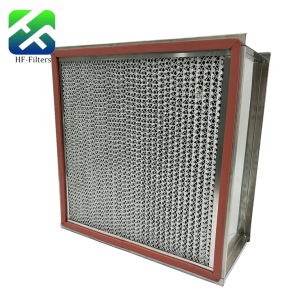These days, as environmental pollution gets worse, filters have become more and more important. They’re key tools for keeping air clean—they grab particles and pollutants out of the air, which helps protect our health. But when you’re picking a filter, there’s one thing you can’t skip: knowing its efficiency rating and how small (or big) the particles it filters are. Let’s take a closer look at the different filter efficiency levels and the particle sizes each handles. My goal is to help you pick a filter that fits exactly what you need.
1. Primary Filters
Think of primary filters as the “first line of defense” in any filtration setup. Their main job is to catch the big, coarse particles floating in the air. You’ll usually see them labeled with a “G class” rating, and they work on particles between 5 microns and 10 microns.
They’re perfect for spots where you don’t need super strict filtration. For example, industrial workshops—when machines run, they kick up a lot of dust, but most of that dust is big particles, so a primary filter can handle it. Warehouses are another good fit: with lots of stored goods, air moving through picks up big bits of debris, and primary filters block those bits from circulating.

2. Medium Filters
Medium filters are a step up from primary ones—they’re better at catching smaller particles. You’ll see them marked with an “F class” rating, and they filter particles from 1 micron to 5 microns.
These are great for places that need cleaner air. Take hospitals: there are lots of patients, and the air might have tiny stuff like bacteria or viruses. Medium filters help trap those medium-sized, harmful particles. Laboratories work too—many experiments need a clean environment, and medium filters make sure the air in labs meets the standards needed to keep experiments running smoothly.

3. High-Efficiency Particulate Air (HEPA) Filters
HEPA filters are the “workhorses” of the filter world—they’re way more effective than primary or medium filters. They usually have an “E class” rating and filter particles as small as 0.3 microns up to 1 micron.
You need these where air cleanliness is non-negotiable. Operating rooms, for example: even a tiny speck of dirt could ruin a surgery, but HEPA filters create almost completely clean air to keep surgeries on track. Clean rooms (like those used for making electronic chips) are another must—chip manufacturing is super precise, and even a tiny particle can mess up a chip. HEPA filters make sure the air in those rooms is clean enough for production.

4. Ultra-Low Penetration Air (ULPA) Filters
ULPA filters are the top of the line—they’re the most effective filters you can get. They’re labeled with an “H class” rating and filter particles from 0.1 microns to 0.3 microns.
These are for places where air has to be extremely clean. Microelectronics manufacturing workshops are a big one: chips are made with nanometer-level precision, so even a tiny particle could cause a short circuit. ULPA filters keep those workshops’ air clean enough to prevent that. Biological laboratories also rely on them—when doing experiments with sensitive biological samples, even small outside particles can ruin the results. ULPA filters keep the lab air ultra-clean to avoid that interference.

Wrapping Up
When you’re choosing a filter, don’t forget two key things: its efficiency rating and the particle sizes it filters. Primary filters for low-demand spots, medium filters for places that need better air, HEPA filters for super clean air needs, and ULPA filters for the strictest cleanliness standards. If you pick a filter that matches what the space needs, you’ll do a better job protecting everyone’s health.
I hope this helps you really understand filter efficiency ratings and the particles they handle. That way, when you pick a filter later, you’ll know exactly what to choose. If you have more questions about filters, or want to learn more, just reach out—we’re happy to help.

